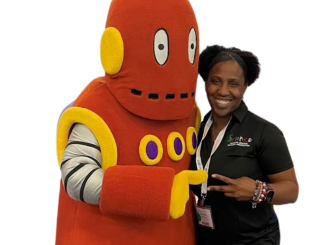
Molly, a 15-year-old pony rescued after Hurricane Katrina by Kaye and Glenn Harris of St. Rose, is the only pony in Louisiana with an artificial leg because she was attacked by a pit bull dog in 2005. Molly’s owner’s need an expensive sling to keep her hoisted in the air while they try to provide the proper maintenance she needs but can’t afford to pay for it.
“To me she is a symbol of New Orleans,” Kaye said.
“You know if you ask me, New Orleans had its leg chopped off, but it can survive just like Molly has,” she continued.
“We don’t have the capability to keep her hoofs clean, without the sling, my husband and son drape her with a bed sheet and lift her up to clean her hoofs, but it’s very uncomfortable for them and her,” Kaye said.
“If we could afford the sling it would be easier to manage her care.”
The couple was contacted by a friend who owned a local feed store about a pony (Molly) wandering around the streets of New Orleans that needed to be saved.
“When I got the call about Molly, my husband and I loaded up the horse trailer to save her,” Kaye said.
“We already had the pit bull, it had been living with us for a couple of weeks, it was also rescued after Katrina,” she continued.
Kaye said the dog had shown no signs of aggressive behavior in the weeks before she attacked Molly.
“We weren’t at home when the attack took place, nobody was, so we’re not sure what happened. All we know is when we returned home we were horrified at by what we saw,” she said.
“I was absolutely shocked when I saw Molly’s leg, ripped apart, and mangled,” she continued.
“This dog had been with us a few weeks and we never saw any sign that it was capable of doing something like this.”
After contacting her veterinarian, Dr. Allison Denny-Barca, the two immediately worked to save Molly.
“Molly was in bad shape. She had lacerations on her head, neck, across her abdomen, and down to the bone on her right leg,” Barca said.
“I really doubted after seeing her that they’d be able to save her life,” Kaye added.
Over time, all of Molly’s wounds healed except the ones on her right front leg. It became apparent to doctors working on the case, that the lower part of the limb had lost its blood supply and was ‘severely compromised’.
Considering the wounds and the courage of the animal, Kaye and her husband, and Dr. Barca saw no other alternative but to try to spare Molly’s life.
“It was amazing to me that she learned to get by with just three good legs, “ Kaye said.
“Her courage and intelligence impressed everyone,” she continued.
“Usually horses that sustain these kinds of wounds are put to sleep (killed),”
“But there was something different about her,” she said.
“It was like she knew she was going to die, so she figured out a way to live and get around all by herself.”
“Dr. Barca and I brought Molly to Baton Rouge on January 16, 2006 and her right front leg was amputated just below the knee where she was attacked by the dog,” Kaye said.
Dr. Rustin Moore, director of the Equine Health Studies Program at Louisiana State University performed the miracle surgery on Molly.
“Amputation is not commonly done on a horse or pony,” Moore said.
“The main reason is that adult horses are not very good at living on three legs because the opposite leg of the one missing usually fails,” he continued.
“Molly’s surgery was a success and she was later fitted with a prosthetic leg.”
Dwayne Mara, clinical perfusionist with Bayou Orthotic and Prosthetic Center in New Orleans, designed Molly’s new leg.
“I was overwhelmed because I had never done this for an animal before,” Mara said.
“I have designed artificial limbs for people for at least eight years,” he continued.
“Molly was my first equine client and also my first client period after I relocated from the storm.”
Mara was so captivated by the experience that he is currently crafting the fourth rendition of Molly’s new artificial leg, each one continually increasing in fit and comfort.
As Molly’s condition continues to progress, she has been able to influence children and adults who have had life-altering illnesses or injuries themselves.
“Molly has begun to make visitations to Children’s Hospital in New Orleans and Ormond Nursing and Care Center in Destrehan,” Kaye said.
“The patients love her, but I think the adults get more enjoyment out of her than the children,” she added.
“The older adults can relate to her struggle because they look at her and understand how she had to overcome difficulties to get this far,” she continued.
“The children are mostly excited to see a pony,” she said.




Be the first to comment